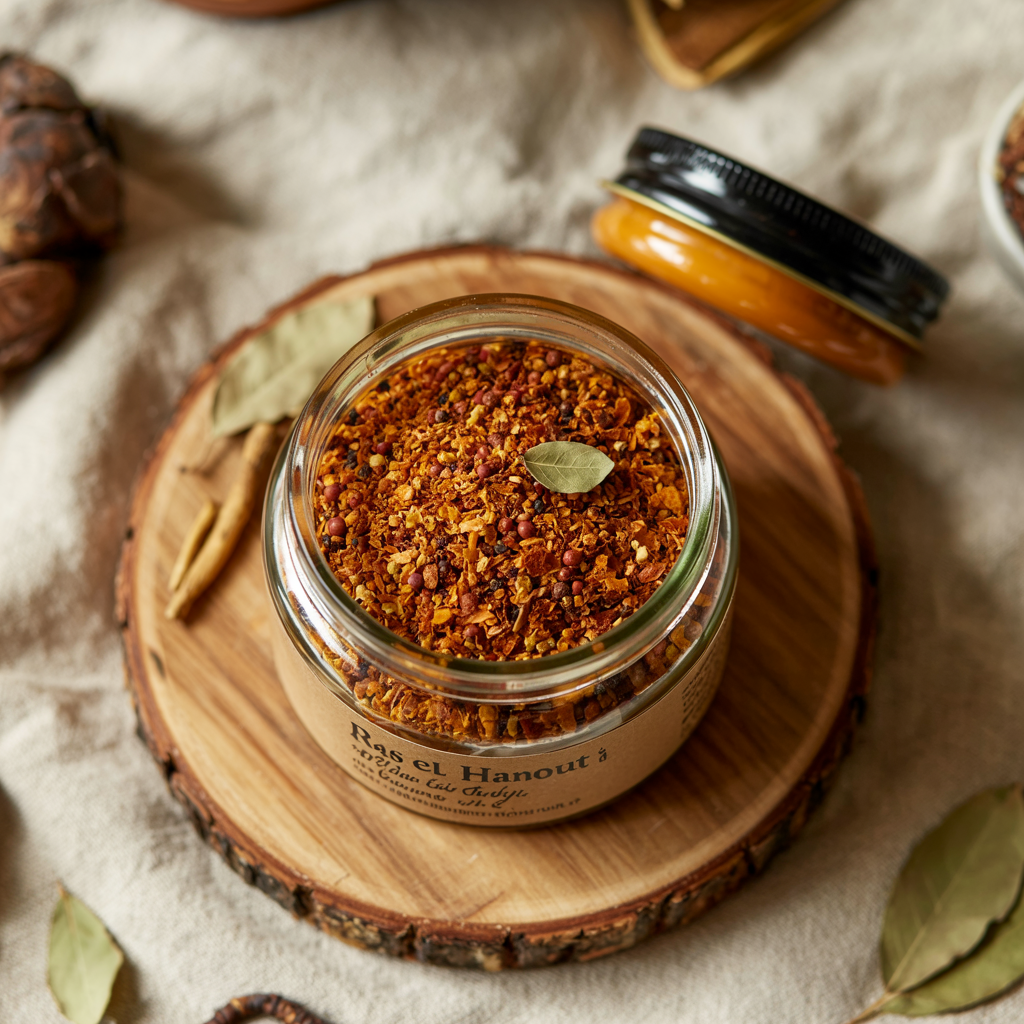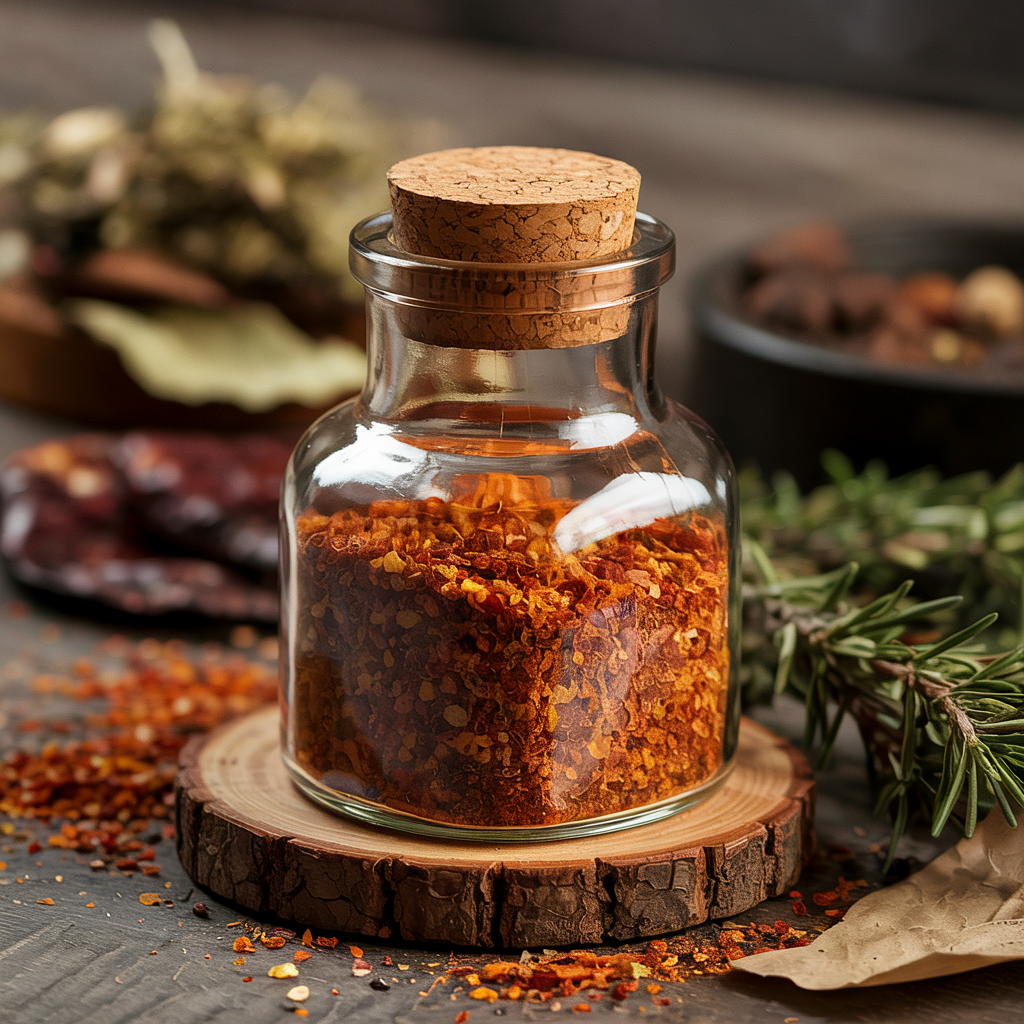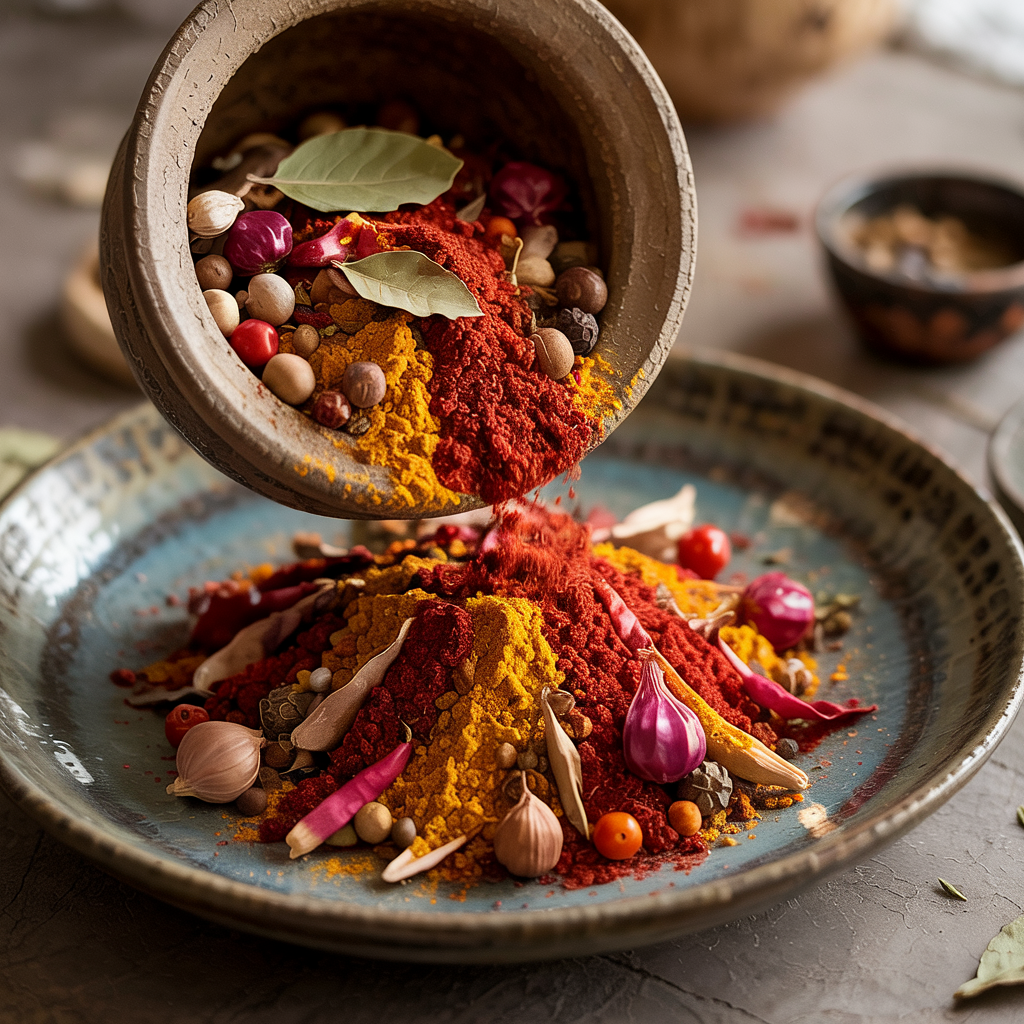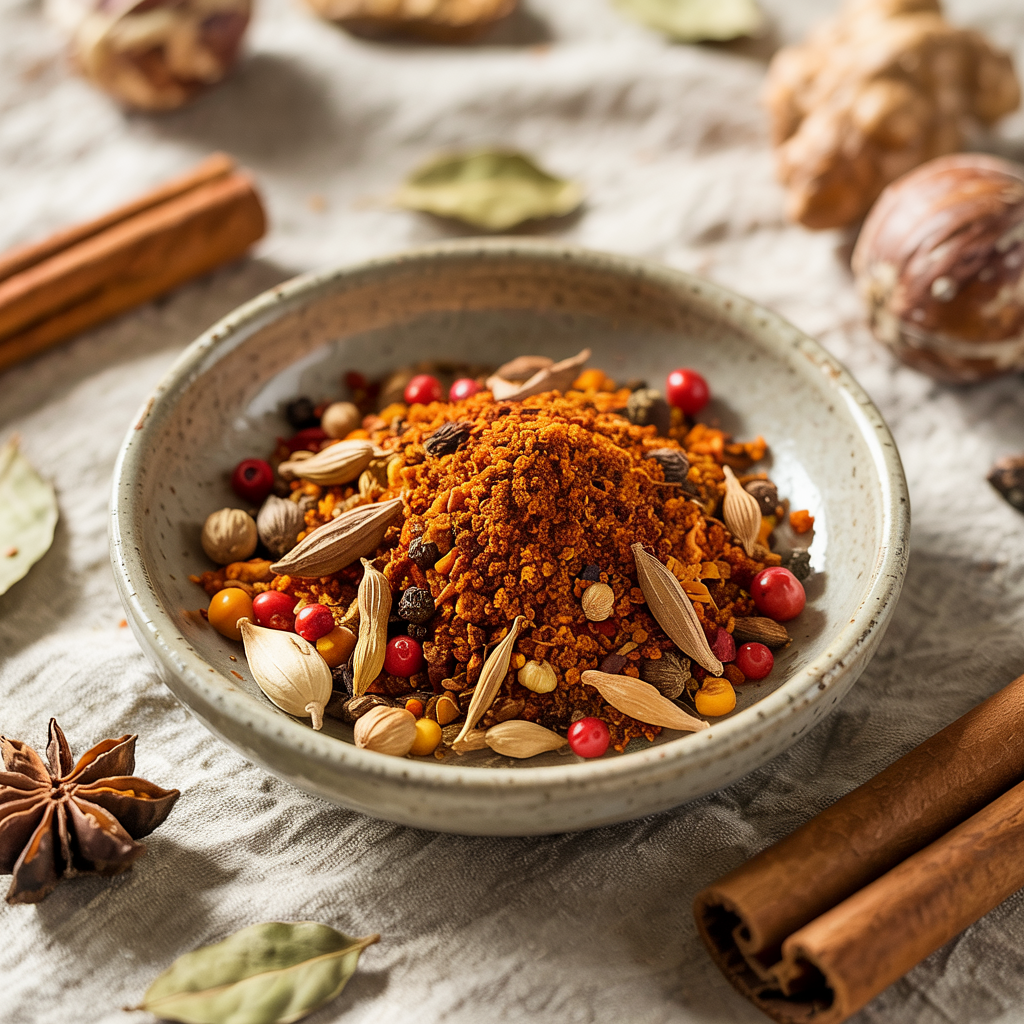Zfriti
RAS EL HANOUT
RAS EL HANOUT
Couldn't load pickup availability
Share
Ras el Hanout is a complex North African spice blend whose name translates to "head of the shop" in Arabic, signifying that it contains the finest spices a merchant has to offer. Originating in Morocco, this blend has spread throughout the Maghreb region, including Algeria, Tunisia, and Libya, with each area developing its own distinctive variations.
Unlike standardized spice blends, authentic Ras el Hanout can contain anywhere from 10 to 30 different spices, varying significantly based on family tradition, regional preference, and individual spice merchants. Traditional versions typically include a foundation of cardamom, nutmeg, cinnamon, ginger, turmeric, black pepper, coriander, and cumin. More elaborate formulations might incorporate rose petals, lavender, grains of paradise, ash berries, orris root, monk's pepper, or cubeb.
When ground, Ras el Hanout presents as a fine powder with a warm, reddish-brown to deep ochre color. The texture is smooth but slightly oily due to the essential oils released during the grinding process. Small flecks of varied colors might be visible, hinting at the diversity of ingredients within the blend.
The aroma of Ras el Hanout is extraordinarily complex and immediately distinctive—sweet, floral notes float above a foundation of warm spices, with subtle hints of pepper and citrus creating depth and brightness. The overall scent profile is simultaneously robust and delicate, reflecting the careful balance achieved through generations of refinement.
Flavor-wise, Ras el Hanout delivers waves of complexity rather than any single dominant note. Initial sweetness from cinnamon and nutmeg gives way to floral warmth, earthy undercurrents, and a gentle heat that develops slowly. Unlike many spice blends focused on heat or singular flavor profiles, Ras el Hanout aims for harmonious complexity where no individual spice overwhelms the others.
In traditional North African cuisine, this blend appears in signature dishes like tagines, couscous preparations, and mrouzia (a sweet-savory lamb dish). The mixture is typically added early in cooking to allow its complex flavors to thoroughly infuse other ingredients, particularly in slow-cooked meat dishes where it can penetrate deeply and transform over hours of gentle heat.
Many Moroccan families maintain their own closely guarded Ras el Hanout recipes, passed down through generations and adjusted according to each spice blender's personal aesthetic. This tradition results in a spice blend that varies dramatically from shop to shop and home to home, making it one of the world's most diverse and personalized spice combinations.
For optimal preservation of its nuanced aromatic profile, Ras el Hanout should be stored in an airtight container away from heat and light. Even with proper storage, its more delicate notes begin to diminish after about three to four months.








